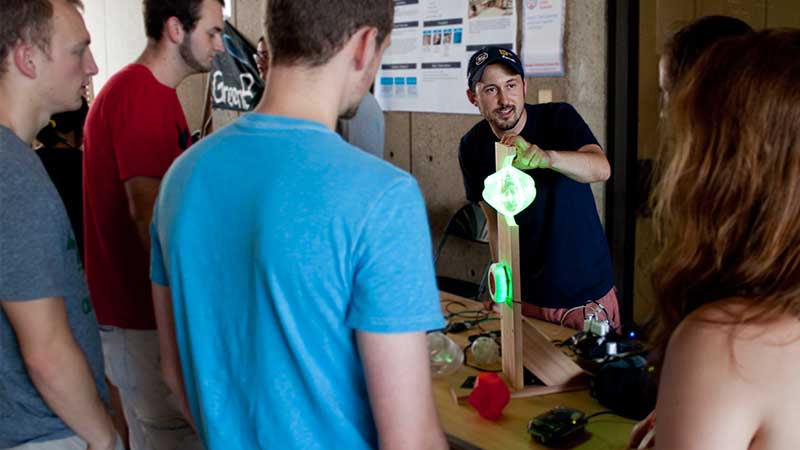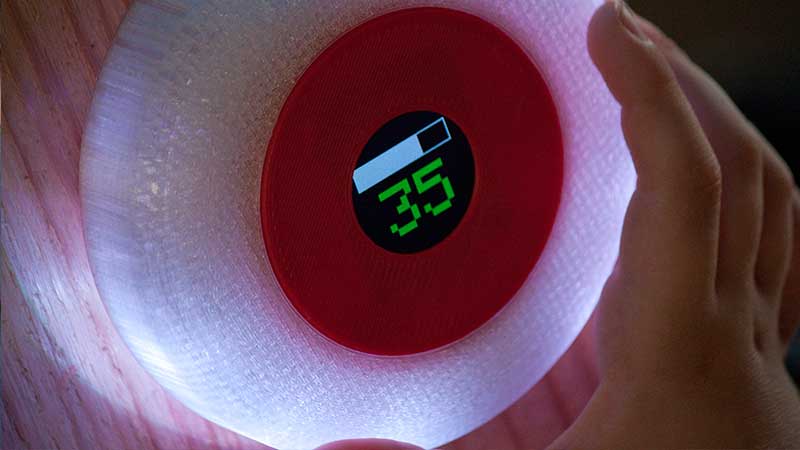Forever a Maker
Justin Sinichko, Former Hardware Developer
Article Category:
Posted on
Over 20 years ago my Dad and I built a bottle rocket launcher. He was an engineer, I loved Legos, and on one weekend after the 4th of July we found ourselves busy with tools in our utility room. There was measuring and drilling, and we eventually emerged with a 2"x4” riddled with holes just large enough for bottle rocket stems to rest in. We simply swiss-cheesed a scrap piece of wood, but in the process we formed memories that I’ll never forget. This was one moment, among a childhood full of moments, where I was able to say “I made this”.
Today, we have a name for the people that are passionate about creating things. We call them “makers,” and they look a lot like you and me. The Maker Movement, a term coined in 2005, is in full swing. Maker Culture continues to evolve, represented in everything from the DIY home improvement craze to new approaches to best practices in education. The movement celebrates tinkering, hacking, writing, building, crafting, and general creating, and brings makers together in real life at incredible, inspiring events. Since 2006, Maker Faires have been the quintessential “festivals of invention, creativity, and resourcefulness.” This past weekend, at the first ever National Maker Faire in Washington, D.C., Viget hosted a booth. I was thrilled to participate by running our booth and representing Viget.

Viget's Illumigami booth set up at the first annual National Maker Faire
The weekend Maker Faire attracted diverse makers from across the country. We saw everything from a 3D printed Shelby Cobra to an origami-Inspired velociraptor costume. It was, as all Maker Faires are, an event that brought people together around inspiring examples of creativity. Viget’s booth told the Illumigami story, and we quickly learned that most adults sympathized with our conference room woes while children shared our love of RBD LEDs. One consistent question we received was about how we created our elegant 3D printed orbs and other translucent parts. Here’s a brief summary of what we do:
We print our orbs in two halves, one at a time, on a Lulzbot Mini. Here is the file for the top half, and the file for the bottom half. Both parts were created with Rhino 5 for Mac and relied primarily on the “twist” command. While it’s perfectly fine to use PLA as a filament, we prefer to use clear T-Glase. This material can be tricky to print with, but we’ve found a happy middle ground that exist somewhere between PLA and ABS profiles. As a reference here is the Simplify 3D print profile that we created. Note that we’re using the ‘vase’ setting which is essentially a continuous extrusion; The extrusion nozzle is .5 mm; And layer height is .14mm.
After two wonderful days, the National Maker Faire concluded with a screening of the upcoming movie entitled “Maker.” This documentary explores the breadth of the maker movement and touches on everything from youth enthusiasm to the tangentially related localized manufacturing revolution. It is available for purchase and download by visiting their website. The film left me feeling better informed, a lot more inspired, and totally nostalgic.
My Dad and I tested our bottle rocket launcher on the outskirts of our neighborhood. We set up the block of wood next to a creek and loaded it with rockets. With only one lighter we could only light so many rockets before the first took off and we were showered with sparks. So, we had to light as many as we dared to light as quickly as we could. I was young, so while Dad worked the lighter I hung back, holding my breath. We jumped back when the rockets went off, howling into the sky.

Viget's interactive Illumigami dial. This little circle can reserve rooms on Google Resource Calendars with a spin and a click.
The only thing more satisfying than making something and watching it work might be seeing it resonate with other people. Maybe this is why we see makers come from across the country to attend the “The Greatest Show and Tell on Earth” - Maker Faire slogan. I enjoyed sharing one of our hardware projects at Maker Faire, and I'm eager to start working on our next idea. I’ll be sure to share it with you here!